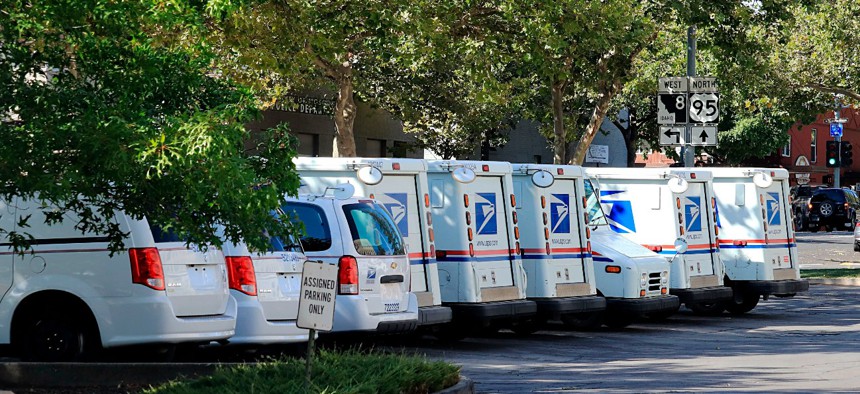
A spokesperson said USPS expects that everyone who wants to continue working for the organization will be able to do so. Don & Melinda Crawford/Education Images/Universal Images Group via Getty Images
USPS begins issuing layoff notices to some employees
The Postal Service hopes to find new jobs for those impacted, but it has not detailed the reasons for the cuts.
The U.S. Postal Service is preparing layoff notices that could take effect in September, notifying staff earlier this month of the potential for workforce reductions.
USPS is allowing impacted workers to apply for lateral or downgraded positions, anticipating it can absorb the employees elsewhere. The changes will affect non-union staff in the logistics division serving in management positions. James Lloyd, a USPS director for labor relations policies and programs, said the reductions were developed "based on an evaluation of staffing criteria and manager levels" by headquarters personnel.
Some operations and industrial engineers, transportation managers, operations support specialists and network specialists will be impacted, according to information USPS provided to the National Association of Postal Supervisors. The supervisor association has taken issue with the Postal Service's process, accusing postal management of avoiding its obligations to consult with the association over its plans and the "RIF avoidance" procedures.
“NAPS will be monitoring the RIF Timeline to ensure that [impacted employees] are getting every opportunity to be placed prior to the RIF date of September 9, 2023,” the group told its members earlier this month.
USPS called NAPS' allegations "not accurate," saying it first notified the association of its plan in February. At the time, the Postal Service said only its staffing changes "may result in employee impacts requiring a reduction in force to be administered." USPS then told NAPS it intended to help affected workers in "securing landing spots." After not hearing back from NAPS, according to Bruce Nicholson, another labor relations director at USPS, the agency notified the group in April of its final decision to implement the RIFs.
NAPS President Ivan Butts countered that "notifications are not consultations, nor is it participation."
Impacted employees have until Sept. 8 to request new assignments and they will have two periods—one starting Tuesday and another in August—to search for openings. Employee separations from USPS will take effect Sept. 8, while reassignments and demotions will take effect Sept. 9.
Darlene Casey, a Postal Service spokesperson, said the agency expects that everyone who wants to continue working for the organization will be able to do so.
“We will deploy a RIF avoidance process that provides any potentially impacted employees an opportunity to find other positions with the Postal Service,” Casey said, adding it is a process USPS has deployed “numerous times” in the past.
She declined to detail exactly how many positions will be cut, or the impetus for changes. The Postal Service is also creating some new positions related to logistics operations and network supervision.
In 2020, shortly after Postmaster General Louis DeJoy took office, USPS restructured the organization to create three business operating units: retail and delivery operations, logistics and processing operations, and commerce and business solutions. The agency shifted some jobs around to fit into the new silos, including some that are now impacted. Butts said the Postal Service was still hiring for some of those roles just two weeks before it announced the RIFs.
"I don't know what they are doing," Butts said. "I'm not 100% sure they know what they are doing."
He added that an untold number of employees have already been reassigned to new jobs, but hundreds more still received the RIF notifications. Even those who find new roles will be placed in a different state or in facilities four-to-five hours from where they live, Butts said. He criticized USPS for failing to use a consistent process for placing impacted workers.
USPS last issued layoffs in 2021, also aimed at non-union management and administrative staff. Those changes were part of the restructuring put in place by DeJoy. Last year, DeJoy said he would likely need to reduce USPS' headcount by 50,000 positions as part of his long-term plan to stabilize the agency.







